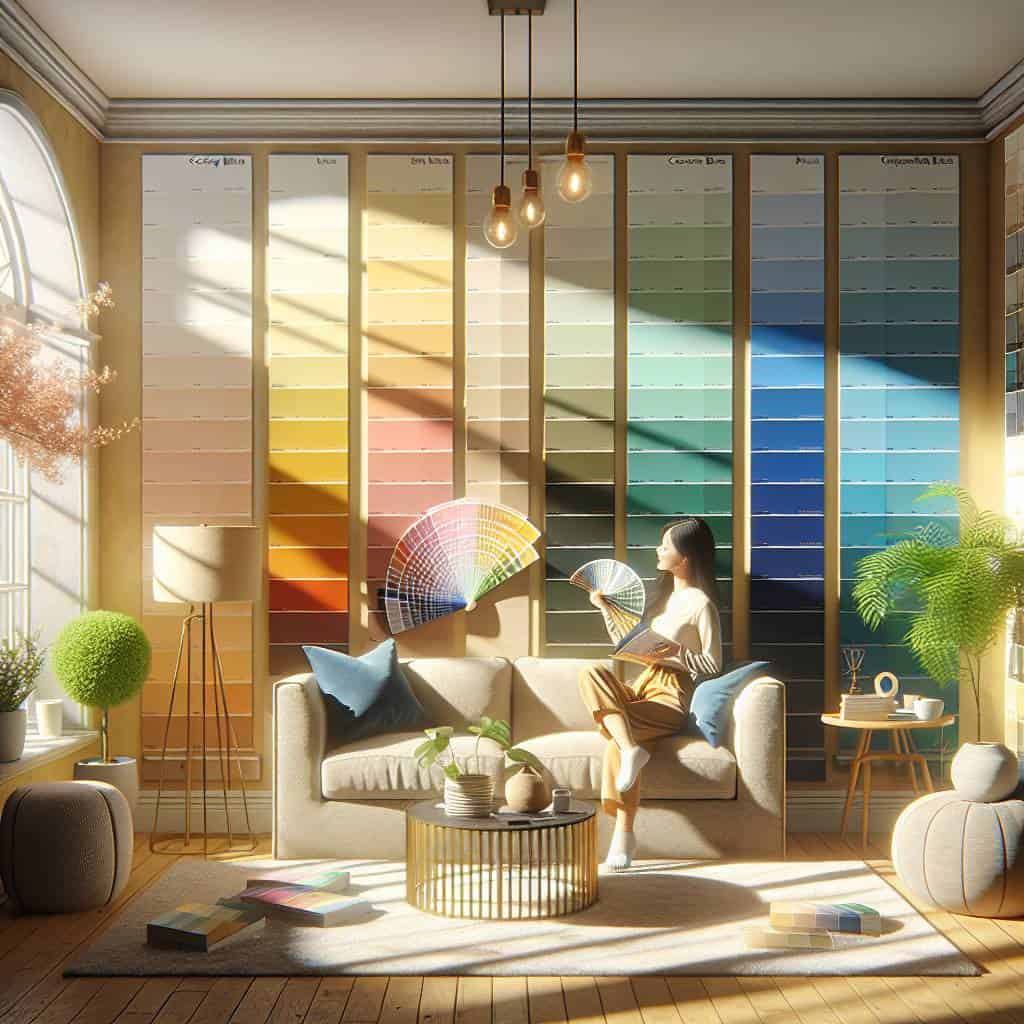
Mastering Mood: How to Choose the Right Paint Color Effortlessly
I once spent an entire weekend agonizing over paint swatches, convinced that the fate of my living room’s soul hinged on selecting the perfect shade. Armed with a stack of tiny paper squares that promised “Cozy Beige” or “Tranquil Blue,” I was determined. But let’s be real, those minuscule chips are nothing more than deceptive little liars. The instant you smear that color on your wall, it morphs into something unrecognizable—somewhere between the aftermath of a toddler’s tantrum and the unsettling hue of a three-day-old bruise. So, there I was, knee-deep in what felt like a paint-sample purgatory, questioning my life choices and my sanity.

But enough about my trials. You’re here because you want to avoid that same colorful abyss. Stick around, and we’ll cut through the nonsense together. We’re diving into the murky waters of paint color theory, the brutally honest truth about undertones, and why popular colors might not be your savior. We’ll talk about the basics that actually matter and why those sample pots might save you from a lifetime of regret. Consider this your survival guide to navigating the bewildering world of paint choices—because, let’s face it, nobody needs another wall that screams “help!” in the wrong shade of green.
Table of Contents
The Color Theory Disaster: When Undertones Aren’t Just a Myth
Let’s get real about color theory because, believe me, it isn’t as straightforward as slapping some paint on the wall and calling it a day. Everyone talks a big game about undertones, but until you’ve seen your chic “ocean mist” turn into a sickly minty nightmare under your living room lighting, you probably brushed it off as decorator mumbo jumbo. Undertones are those sneaky little devils that hide beneath the surface of your paint, ready to jump out and clash with every piece of furniture you own. Think of them as the mood ring of the color world—what you see isn’t always what you get. So, when you’re choosing that ‘perfect’ shade, remember: those undertones are not the stuff of legends. They’re lurking, and they’re ready to ruin your day.
Now, if you’re thinking, “This sounds like chaos,” you’re spot on. But here’s the trick: embrace the chaos with a bit of strategy. Get those paint samples, but don’t just rely on those paltry chips. Slap those samples on the actual walls. Different walls. At different times of the day. Because your walls are like stage performers—they change under every spotlight, and you need to see them under all the angles. And don’t just do this because some blog told you to (oh, the irony). Do it because you’re smarter than the paint marketing machine. You know that “popular colors” don’t mean squat if they clash with the light in your home. So, test, test, and test again. Because, let’s be honest, no one wants to live in a color theory disaster zone.
The Truth Behind the Color Wheel
Choosing the right paint color is like trying to decipher a secret code. Samples lie, theory overcomplicates, and undertones are the tricksters in the shadows. Trust your gut more than the trends.
The Paint Color Odyssey: Lessons Learned
In the end, wrestling with the beast that is paint color selection has been like trying to decipher an ancient riddle with no Rosetta Stone in sight. My walls have seen more swatches than a fabric store, each promising to be ‘the one’ but ultimately failing to capture the elusive vision I had in my head. It’s a humbling reminder that even in the age of endless information and Pinterest dream boards, sometimes the only way to get it right is through good old-fashioned trial and error.
But maybe that’s where the beauty lies. In the imperfections, the unexpected surprises, and the stories that each misstep tells. Because when the dust settles—or rather, when the paint dries—it’s not just about the color on the walls. It’s about the journey of choice, the lessons learned, and the realization that sometimes, the ‘perfect’ shade doesn’t exist. And perhaps that’s okay. Because what’s life without a little chaos and color experimentation, anyway?
Leave a Reply
You must be logged in to post a comment.